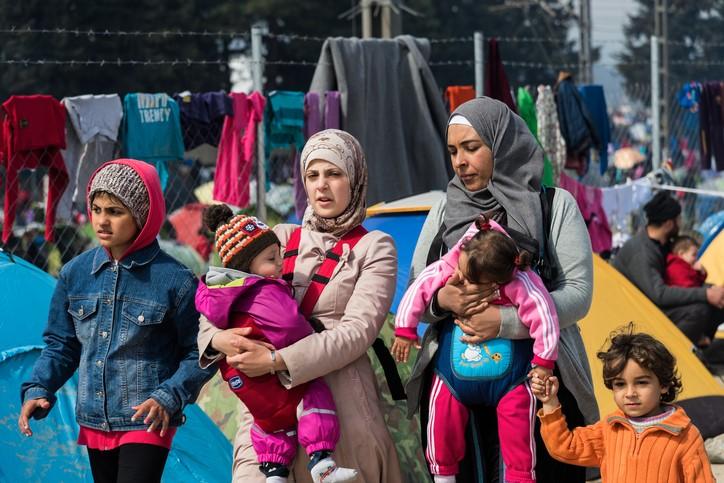A new review of research on migrant populations in Europe has found that more than a quarter are infected or colonized with antibiotic-resistant bacteria, with evidence suggesting that the pathogens are being acquired along the migration route or in host countries.
The findings are from a review and meta-analysis of observational studies on antimicrobial resistance (AMR) in migrants conducted by researchers from Imperial College London and published yesterday in the The Lancet Infectious Diseases. The researchers also found that the prevalence of AMR carriage or infection was even higher among refugees and asylum seekers and in high-migrant community settings. But they did not find high rates of AMR transmission from migrants to host populations.
The findings come amid a recent wave of immigration that has brought more than 2 million migrants to Europe since 2015, an influx that's been driven in part by conflicts and instability in the Middle East and Africa. The authors of the study suggest that the poor conditions that many migrants are exposed to in transit and in host countries—including crowded refugee camps and detention centers with poor sanitation and little access to healthcare—may promote the spread of antibiotic-resistant bacteria. The role of these settings in the spread of infectious diseases has been highlighted in previous studies.
"Poor social conditions in these settings, such as inadequate sanitation, overcrowding, and restricted access to health services (including antibiotics or vaccinations), favour the spread of antibiotic-resistant infections," the authors write.
Prevalence of infection and colonization
In their review of papers published from January 2000 through January 2017, the researchers identified 23 studies reporting on antibiotic resistance in 2,319 migrants. Countries of origin included Syria, Afghanistan, Eritrea and other countries in the Middle East, Africa, and Asia. Of these migrants, 77% were refugees or asylum seekers.
Nineteen of the studies reported on methicillin-resistant Staphylococcus aureus (MRSA), and 12 of the studies reported on AMR in gram-negative bacteria. When they were reported, the clinical manifestations were mainly skin and other soft-tissue infections and diarrhea.
Overall, the pooled prevalence of any detected AMR infection or carriage among migrants was 25.4%, with MRSA accounting for 7.8% and drug-resistant gram-negative bacteria accounting for 27.2%. The pooled prevalence of infection was 3%, and the pooled prevalence of carriage was 23%.
Among refugees and asylum seekers, pooled prevalence of AMR infection or carriage was 33%, compared with 6% in other migrants. In high-migrant community settings, the prevalence was 33.1%.
None of the articles showed evidence of high rates of onward transmission of AMR pathogens to host populations, a finding the authors say could be linked to high-migrant communities being segregated from local communities.
Poor living conditions
While many of the countries and regions that the migrants came from are known to have high rates of AMR, the authors say they found evidence in the included studies that suggests the antibiotic-resistant organisms were acquired either during migration or in the host countries, which included Spain, Italy, Greece, Germany, Austria, the Netherlands, Sweden, and Switzerland.
For example, three of the studies found that migrants with similar migration trajectories were colonized with the same microorganisms. A study that looked at MRSA infections in four Swiss refugee centers found six clusters with recent transmission events and no relatedness in isolates from patients who came from similar regions.
Three of the countries where the studies were conducted—Greece, Italy, and Spain—are the main points of entry for migrants to Europe. They have also been found to have a high prevalence of MRSA (39.2%, 34.1%, and 25.3%, respectively), which raises the possibility that migrants could have acquired the pathogen from people in those countries.
But it's the poor conditions in the places where refugees are housed while they await resettlement that may be the most important factor in spreading AMR bacteria among migrants, the authors argue.
They suggest that interventions to improve living conditions should include a focus on better sanitation, less overcrowding, better infection prevention and control strategies, and increased access to health services. In addition, they call for more screening for colonization and improved antibiotic susceptibility testing in high-migrant community settings. While hospitals routinely target migrants and refugees from high-AMR-prevalence countries for this kind of testing, the migrants evaluated in the reviewed studies had infrequently been admitted to hospitals.
"Increased antibiotic resistance among refugees and asylum seekers and in high-migrant community settings (such as refugee camps and detention facilities) highlights the need for improved living conditions, access to health care, and initiatives to facilitate detection of and appropriate high-quality treatment for antibiotic-resistant infections during transit and in host countries," the authors write. "These improvements will enable timely detection and treatment of infections when they do occur, thus reducing transmission and poorer and more costly health outcomes."
See also:
May 17 Lancet Infect Dis study























